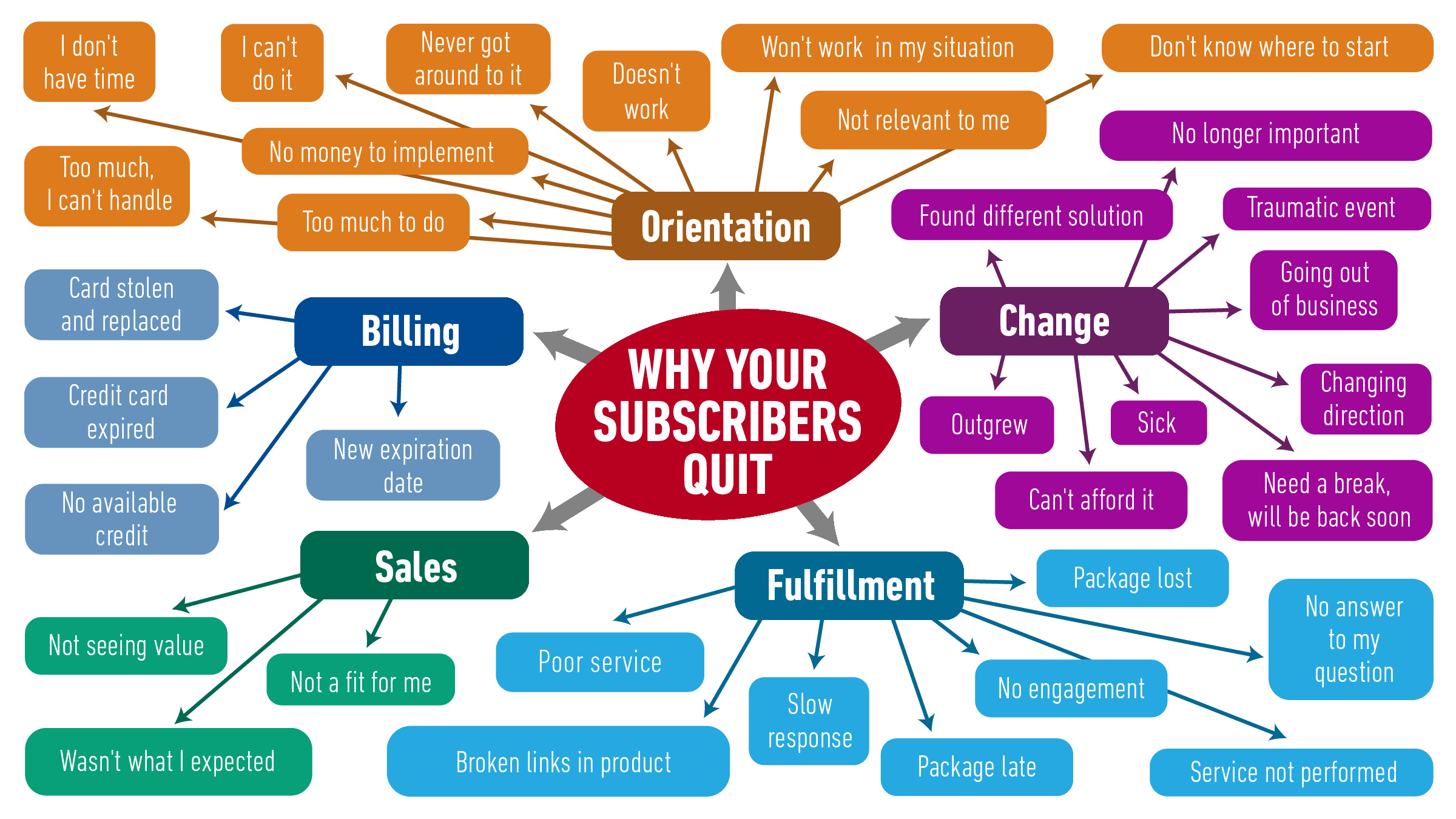
34 Reasons Why Your Subscribers Quit and How to Stop It
Lorem ipsum dolor sit amet, consectetur adipiscing elit. Ut elit tellus, luctus nec ullamcorper mattis, pulvinar dapibus leo.
Far too many efforts to reduce churn fail. They go after several factors that are causing churn without addressing the entire problem. Frankly, if you haven't clearly outlined the problem, there's no way you can devise an adequate solution. It's like jumping into the car and driving in some random direction before you know where you are going. More than likely, you are getting farther from your destination rather than closer. If you are going to retain your subscribers, you better recognize what...
HELLO!
This premium article is exclusively reserved for Subscription Insider PRO members.
Want access to premium member-only content like this article? Plus, conference discounts and other benefits? We deliver the information you need, for improved decision-making, skills, and subscription business profitability. Check out these membership options!
Learn more about Subscription Insider PRO memberships!
Already a Subscription Insider PRO Member?
Please Log-In Here!








